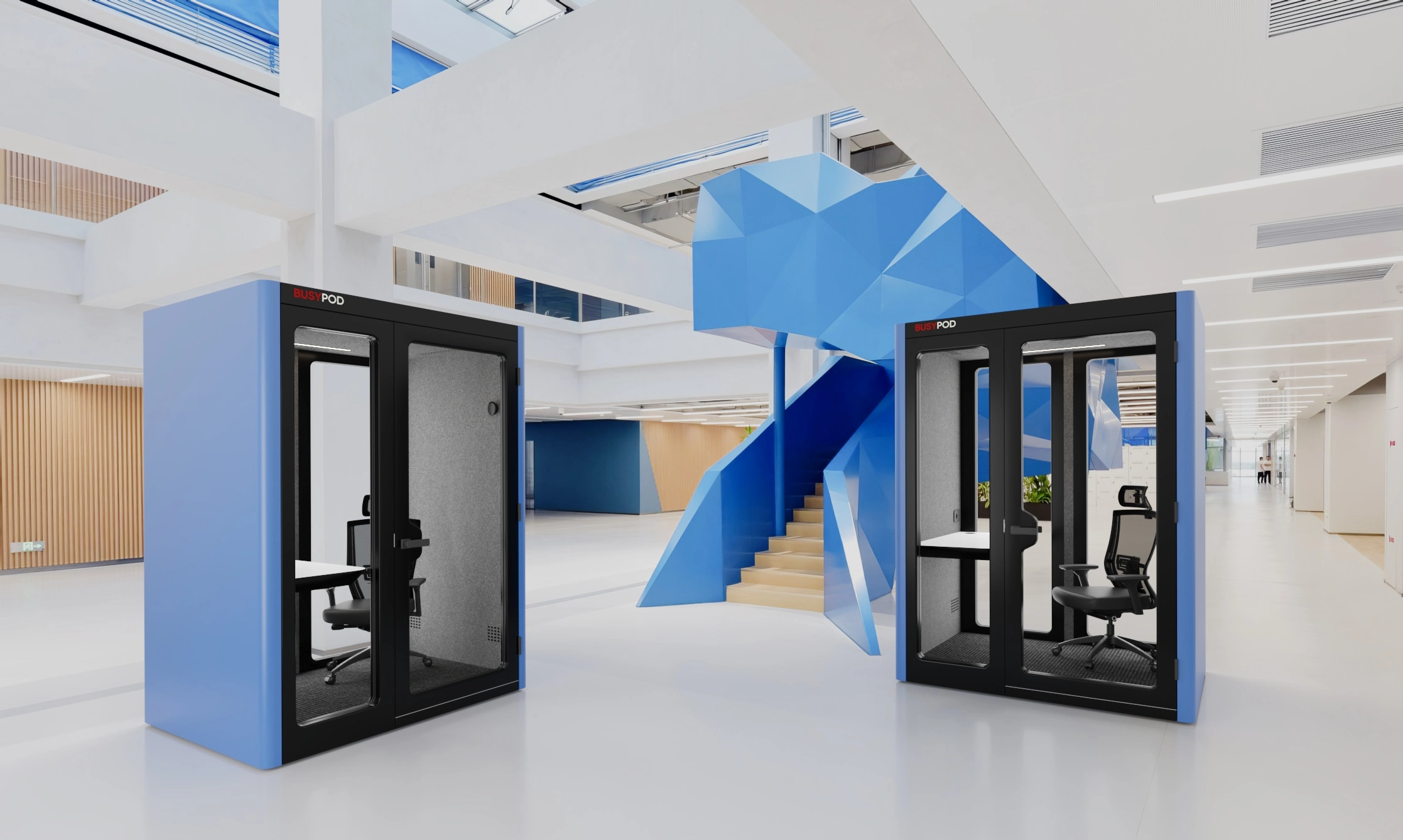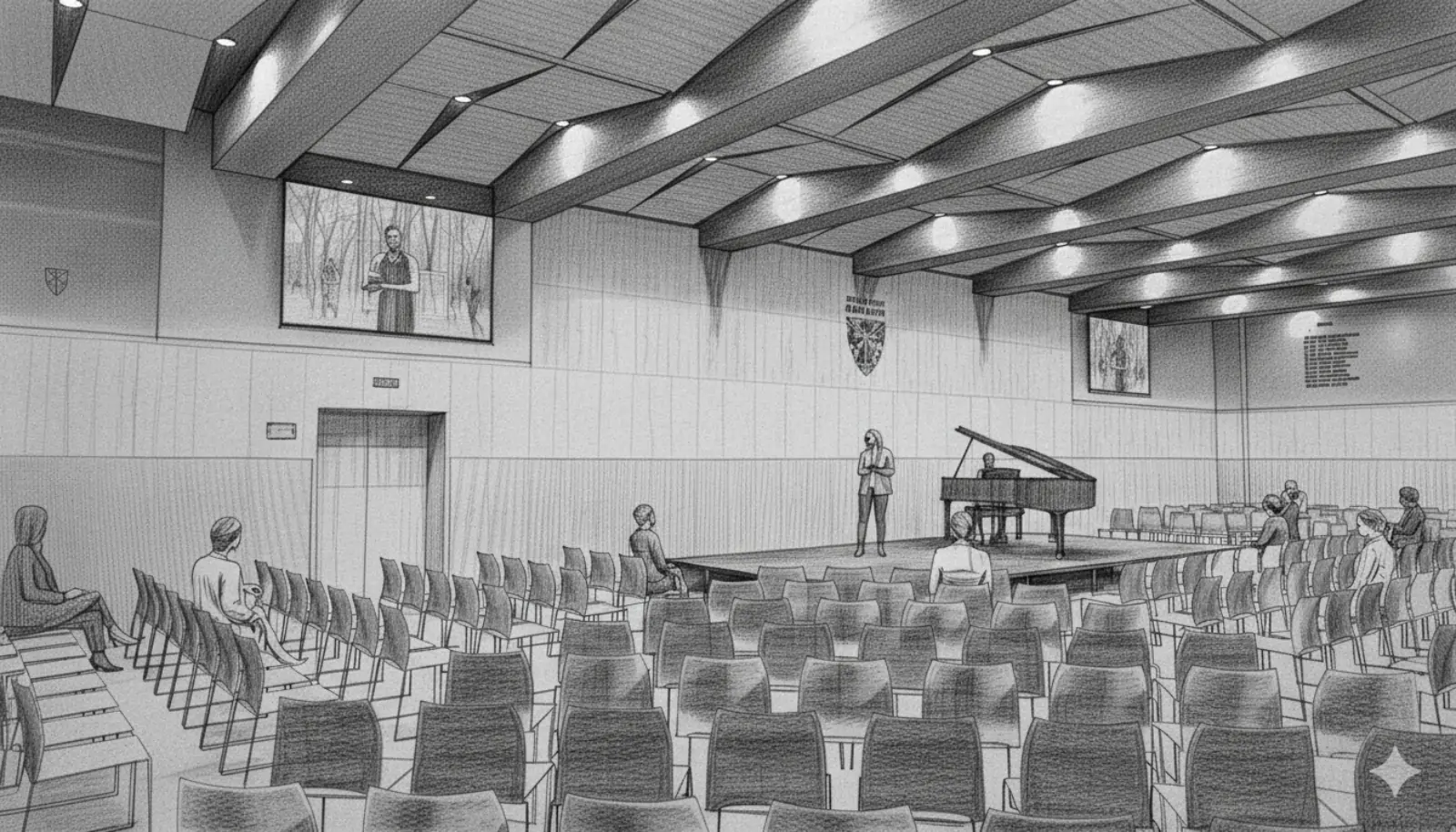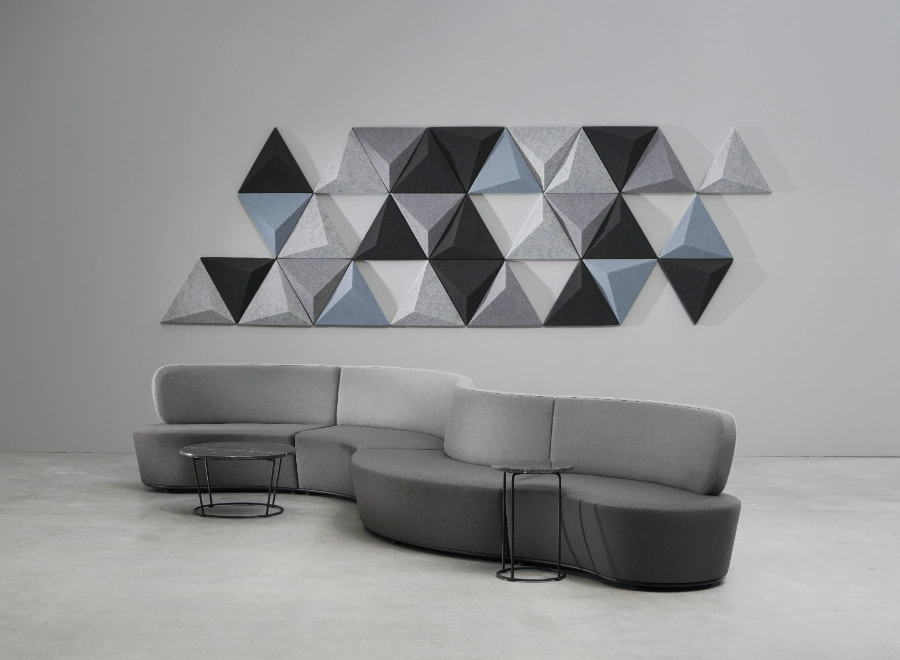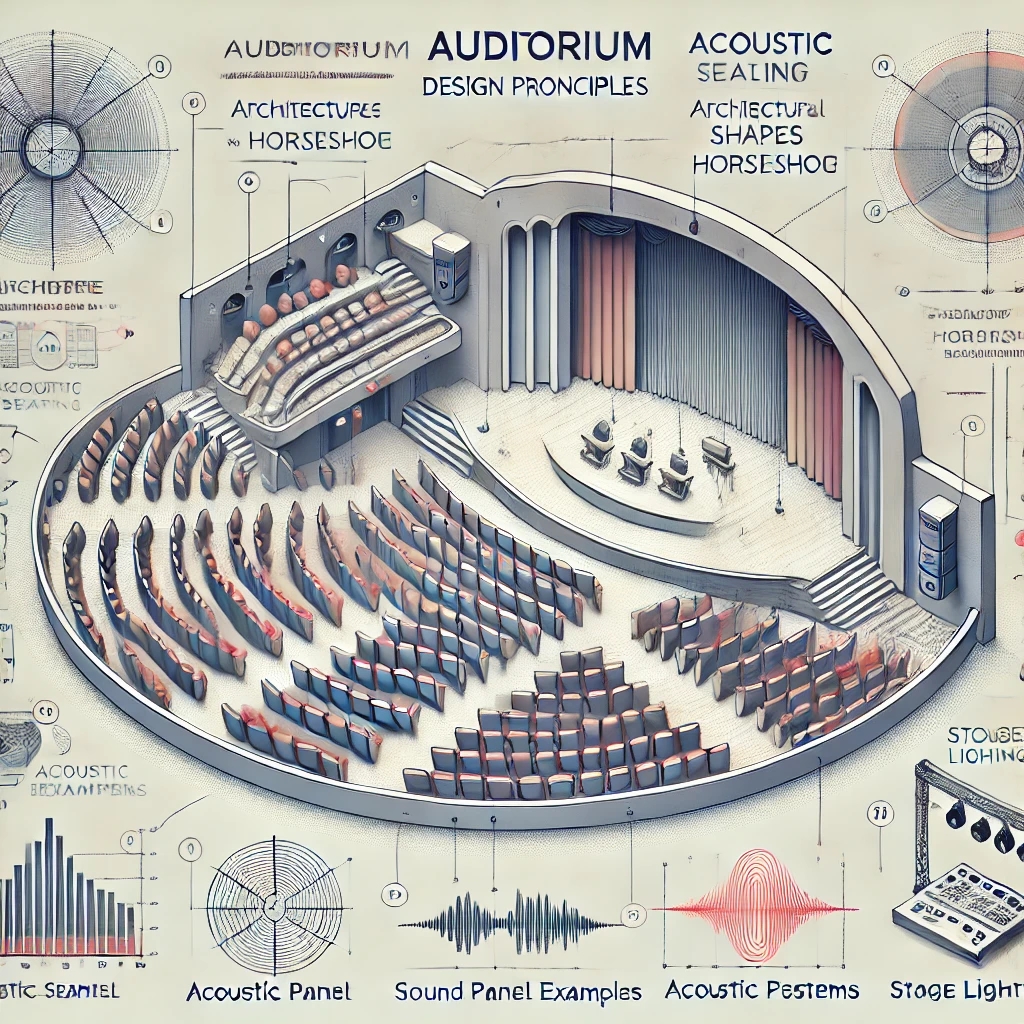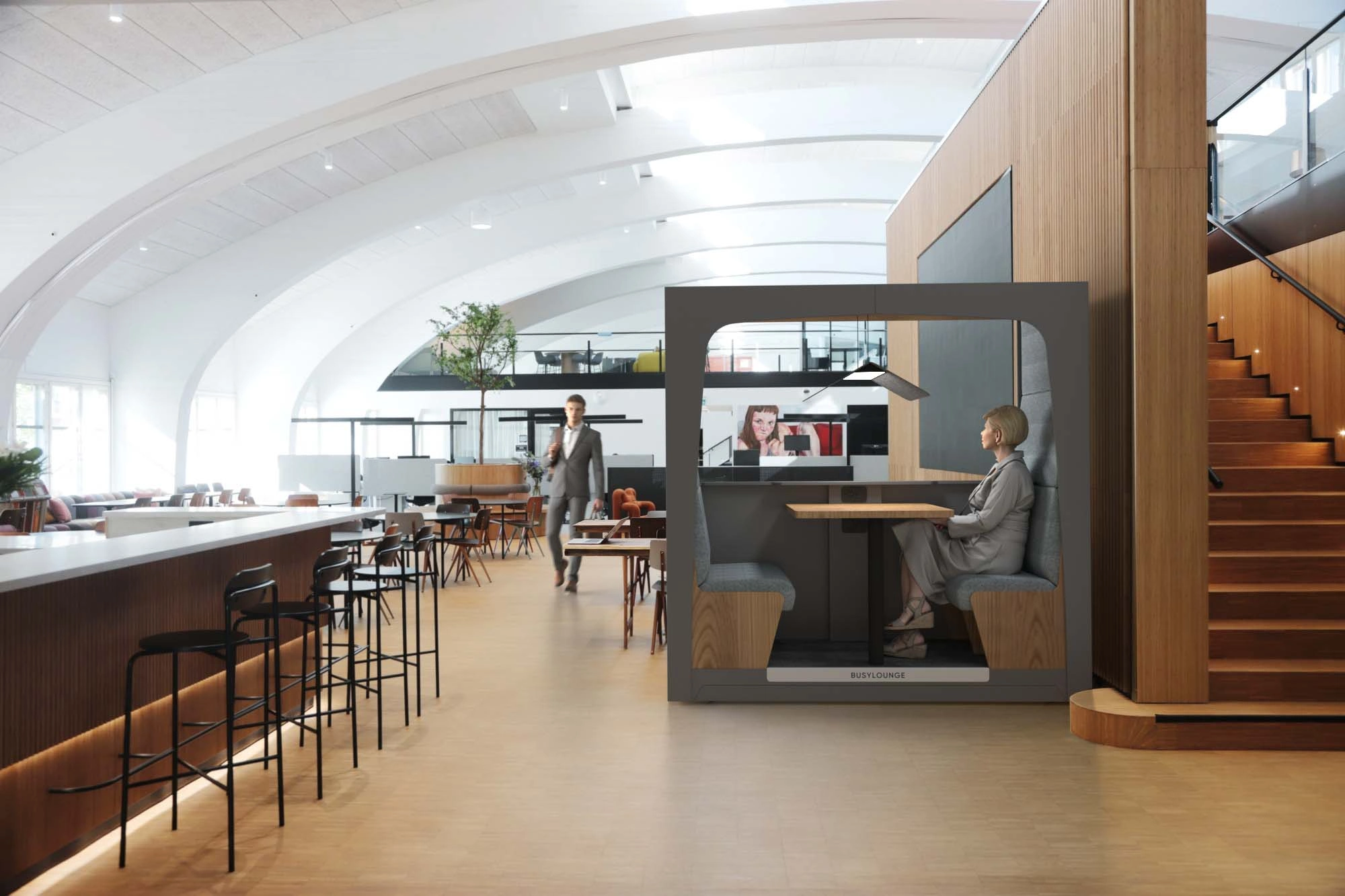Auditorium Design: A Comprehensive Guide to Creating Exceptional Acoustic Performance Spaces
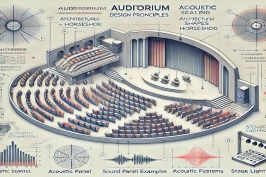
Introduction
Building an auditorium is both an art and a science,requiring architectural elegance, acoustic precision, and technologicalinnovation. Each detail, from seating arrangements to sound diffusion, iscritical in providing an immersive experience for audiences. A well-designedauditorium provides exceptional sound quality, visual clarity, and audiencecomfort when hosting theatrical performances, symphony concerts, or keynotelectures. Dive into this comprehensive guide to learn the principles andpractices that turn ordinary spaces into extraordinary performance hubs.
An auditorium is more than just a venue—it’s a carefullycrafted space where architecture, acoustics, and functionality converge tocreate an immersive experience. From optimal spatial planning andacoustic treatments to seating layouts and stage design,every element plays a role in shaping clarity, comfort, and performance.Thoughtful design transforms auditoriums into versatile,high-performing environments that enhance audience engagement andperformer impact. Explore the full guide below, and for more expertinsights, subscribe to our newsletter or contact us todiscuss tailored solutions for your space.
1. Description of Auditoriums
An auditorium is a specialized space designed to hold large crowds for a variety of events, including theatrical performances, concerts, lectures, and conferences. Its primary goal is to create an environment in which sound and visual elements are optimized, resulting in a fully immersive experience for all attendees. A well-designed auditorium achieves the ideal balance of aesthetics, functionality, and technical excellence.
2. Architectural Design for Auditoriums
The architectural design of an auditorium includes the planning of space, structural efficiency, and aesthetic appeal to create an environment suitable for large-scale events. Key considerations include:
- Auditorium Shapes: These can range from fan-shaped, horseshoe, rectangular, and elliptical, each offering its own set of visual and acoustic characteristics. Fan-shaped forms improve sightlines, horseshoe layouts offer intimate viewing experiences, rectangular shapes are versatile, and elliptical forms can produce dynamic sound reflections.
- Volume and Proportion: An auditorium's physical efficiency and acoustic performance are determined by its volume and proportions. An ideal height-to-width ratio of 0.6 to 1 ensures even sound distribution. To maintain acoustic quality and comfort, the total volume should be between 4 and 5 cubic meters per seat. Ceiling heights of 9 to 12 meters are preferred for mid-sized auditoriums, while larger venues may require heights of more than 15 meters to avoid excessive sound reflections.
- Entry and Circulation Design: Effective entry and circulation design promotes ease of movement, safety, and efficient audience flow. Include wide aisles of at least 1,200 mm for easy passage. To meet fire safety standards, entrances and exits should be uniformly distributed, with at least one exit every 30 meters. Ramps should have a slope of no more than 1:12 for accessibility, and lobbies should allow enough space for queuing and interval movement. Emergency exits should lead directly to outdoor assembly points and be clearly marked to ensure quick evacuation in an emergency.
3. Auditorium Seating Layout
The auditorium's seating layout determines the audience's comfort, visibility, and acoustics. Effective seating design strikes a balance between functionality and audience engagement.
- Row Spacing: A minimum of 850 mm is recommended for audience comfort and ease of movement. In high-traffic or premium seating areas, the spacing increase to 1,000 mm to improve accessibility. VIP or special seating zones might feature a spacing of up to 1,200 mm. Correct row spacing not only improves audience comfort but also makes cleaning and maintenance easier, especially in venues with multiple daily events. Ensure that the spacing meets local building codes and accommodates a wide range of audience demographics, including taller people and those using mobility aids.
- Tiered Seating: To ensure clear sightlines, allow for a vertical rise of approximately 120 mm per row. Balconies can also be used as an extension of tiered seating, providing more capacity and unique viewing angles. Balconies should have a minimum distance of 1.5 meters from the row below and railings at least 1.1 meters tall for safety. Avoid excessively steep balcony inclines (greater than 20 degrees), as they can cause visual discomfort and restrict access.
- Capacity Planning: Design seating capacity based on room volume, allocating 1.1 to 1.3 cubic meters
4. Interior Design for Auditoriums
An auditorium's interior design considers both aesthetic and functional aspects to create a visually appealing and acoustically efficient environment. The following is a structured approach to improving interior design.
- Interior Geometry and Patterns: The geometry and pattern of an auditorium's interior have a significant impact on its visual appeal and acoustics. Curved or angled walls, strategically placed panels, and unique patterns might efficiently diffuse sound and reduce echoes.
- Colour Scheme and Finishings: The colour scheme should be consistent with the auditorium's purpose and branding while also promoting comfort and focus. Neutral and warm tones work well in multipurpose auditoriums, while vibrant colours energize spaces for performances or lectures.
- Walls and Ceilings: Acoustic wood panels, perforated or slotted, absorb specific frequency ranges while providing natural warmth. Panels with high NRC and STC ratings reduce sound reflections while improving speech clarity. Suspended wood baffles or coffered designs improve acoustics and create visual depth. Diffusers integrated into panelling help to reduce flutter echoes and standing waves.
- Lighting Design: Layered lighting solutions, such as ambient, task, and accent lighting, ensure visibility and ambience. LED technology provides energy efficiency and customization, enabling dynamic performance scenarios. Dimmable systems and anti-glare fixtures provide uniform illumination, which reduces eye strain. Stage lighting may require more than 1,000 lux for optimal visibility, whereas general lighting typically achieves 300-500 lux.
- HVAC Systems: Air conditioning (HVAC) systems strike a balance between thermal comfort, noise control, and energy efficiency. Strategically placed ducts reduce noise, while advanced systems such as variable air volume (VAV) units improve climate control. Proper filtration ensures air quality, resulting in a healthy environment for large audiences.
5. Acoustic Design for Auditoriums
Acoustic design focuses on improving sound clarity and distribution, ensuring that the audience hears high-quality acoustics throughout the space.
- Reverberation Time: Aim for 1.5 to 2.0 seconds for auditoriums that are primarily used for music, and 1.0 to 1.5 seconds for speech-centered events.
- Sound Diffusion and Absorption: To achieve clarity and quality, efficient acoustic design requires maintaining a balance between sound diffusion and absorption. Diffusers on walls and ceilings, with a depth of at least 100 mm, properly distribute sound waves, preventing dead spots and improving the space's natural acoustics. Absorptive materials, such as fabric panels or acoustic foam, with an NRC (Noise Reduction Coefficient) of 0.7 to 1.0, are strategically used to control excess reverberation and unwanted echoes. Together, these elements create a dynamic sound environment appropriate for a variety of performances.
- Noise Isolation: Use double-layer walls with a 150 mm air gap and vibration-isolated floors to prevent external noise intrusion. Avoid over-reliance on sound-absorbing materials, which can lead to a "dead" acoustic environment that lacks vibrancy.
6. Materials for Auditoriums
Material selection is critical for achieving the desired aesthetic and functional results in an auditorium. Acoustics, durability, and safety can be significantly affected by material choices.
- Audience Flooring: The flooring in audience areas should be long-lasting, comfortable, and soundproof. Carpeting with a pile height of 6-8 mm is ideal for reducing noise from foot traffic while creating a warm and inviting environment. Anti-static and flame-retardant treatments are critical for safety and maintenance effectiveness.
- Stage Flooring: Stage floors should be durable and adaptable to accommodate a variety of performance types. High-density plywood or hardwood panels with shock-absorbing underlayers help reduce impact noise while providing a stable platform for performers. The surface finish should reduce glare and promote safe movement. Ensure that the materials used are flame-retardant and comply with local fire safety regulations.
- Seating Upholstery: Seating materials must strike a balance between durability and comfort. Choose fire-resistant fabrics that withstand heavy use. Upholstery should have a minimum durability rating that ensures long-term performance without sacrificing aesthetics.
- Acoustic Panels: Acoustic panels play an important role in sound management. To control reverberation and echoes, consider using wood panels (NRC 0.6 to 0.9) or fabric-covered panels (NRC 0.7 to 1.0). Panels can be strategically placed on walls and ceilings to provide a seamless integration of functionality and design. Use fire-resistant acoustic materials to meet safety standards and increase longevity.
7. Stage Design for Auditoriums
Stage design is a critical component in an auditorium, providing a functional platform for performers while also ensuring audience engagement.
- Stage Machinery: Adding appropriate stage machinery is essential for improving the functionality and versatility of small to medium-sized auditoriums. Motorized rigging systems allow for the safe and efficient movement of lighting, scenery, and curtains. These systems include electric pilewind winches and manual hoists, which are ideal for lifting heavy stage equipment and enabling quick stage transformations.
- Backstage: Small to medium-sized auditoriums should set aside 20-30 square meters for backstage operations, such as storage, set changes, and preparation areas. This space should be well-organized to accommodate performers and technical crew without overcrowding. Dressing rooms and access to stage machinery should also be included in the backstage layout to ensure smooth transitions between performances.
8. Professional Audio, Video, and Lighting Design for Auditoriums
Professional audio, video, and lighting systems are essential to creating dynamic and engaging events in an auditorium.
- Audio Systems: Install line array speakers capable of producing a sound pressure level (SPL) of 90-100 decibels at the farthest seat. Include surround speakers to enhance the auditory experience, creating an immersive sound field, particularly for musical and theatrical performances. Subwoofers boost low frequencies, ensuring depth and richness in sound. Ensure that microphones with adjustable sensitivity are available to meet various event requirements. Avoid placing speakers near reflective surfaces, which can cause feedback and poor sound quality
- Video Projections: For clear visuals in well-lit environments, use projectors with at least 10,000 lumens. Include motorized screens and adjustable mounts to accommodate various event requirements. High-definition (HD) or 4K resolution projectors provide sharp images for presentations and performances.
- Lighting: Depending on the size of the venue, combine theatre lighting units, robotic fixtures, and effect lighting to create flexible configurations. For small to medium-sized auditoriums, 24 to 48 fixtures should suffice to meet functional and creative lighting requirements. Use color-changing fixtures to generate mood changes and visual effects that correspond to performance themes.
Conclusion
Designing an auditorium involves seamlessly integrating architectural brilliance, advanced acoustic engineering, and cutting-edge technology. By following these principles, any space can be transformed into an inspiring venue that provides exceptional performance and user experience. Through a harmonious blend of form, functionality, and innovation, auditoriums become dynamic hubs of culture and creativity, embodying the #EndlessPerformance vision.



